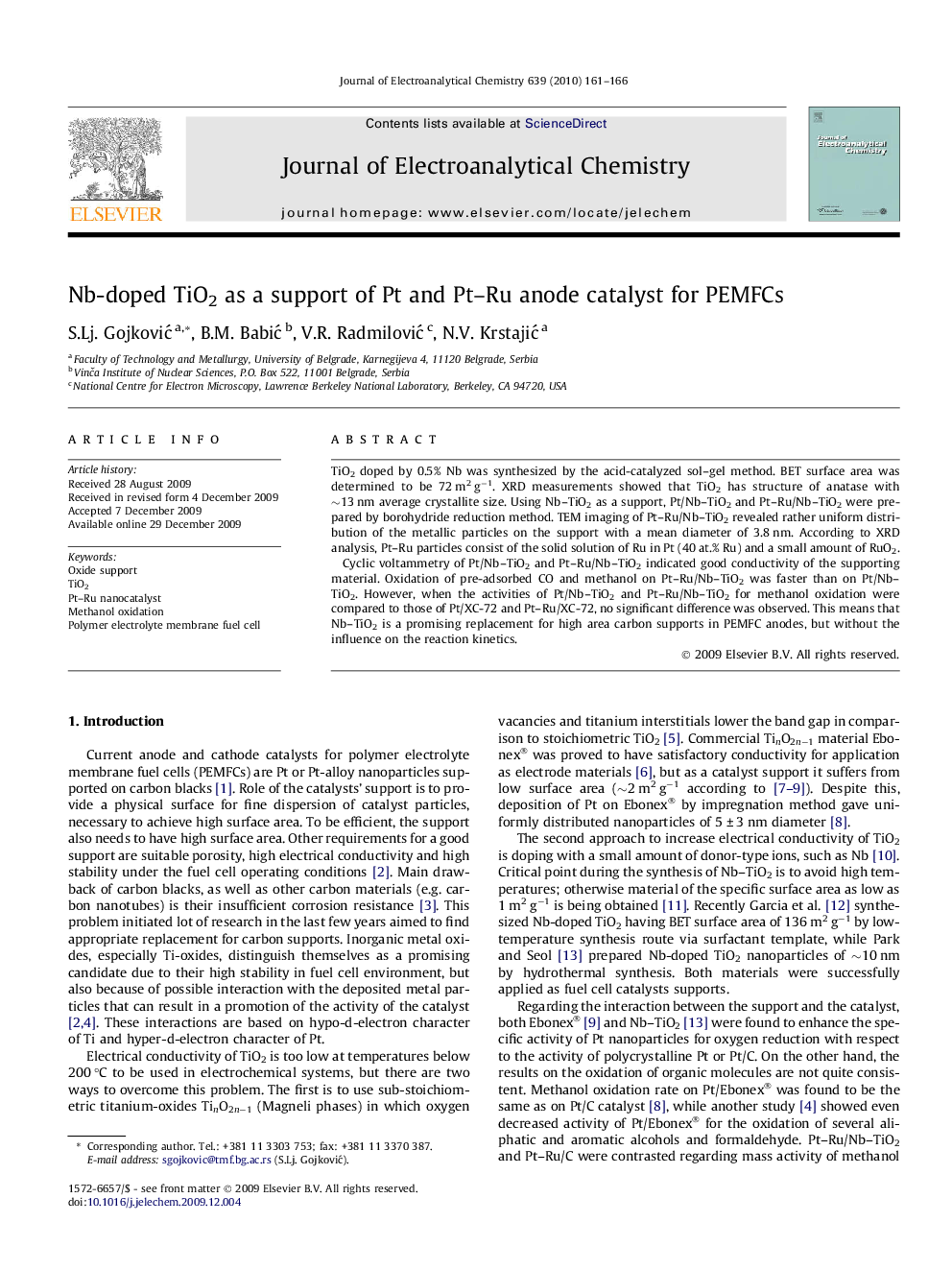| کد مقاله | کد نشریه | سال انتشار | مقاله انگلیسی | نسخه تمام متن |
|---|---|---|---|---|
| 220037 | 463312 | 2010 | 6 صفحه PDF | دانلود رایگان |

TiO2 doped by 0.5% Nb was synthesized by the acid-catalyzed sol–gel method. BET surface area was determined to be 72 m2 g−1. XRD measurements showed that TiO2 has structure of anatase with ∼13 nm average crystallite size. Using Nb–TiO2 as a support, Pt/Nb–TiO2 and Pt–Ru/Nb–TiO2 were prepared by borohydride reduction method. TEM imaging of Pt–Ru/Nb–TiO2 revealed rather uniform distribution of the metallic particles on the support with a mean diameter of 3.8 nm. According to XRD analysis, Pt–Ru particles consist of the solid solution of Ru in Pt (40 at.% Ru) and a small amount of RuO2.Cyclic voltammetry of Pt/Nb–TiO2 and Pt–Ru/Nb–TiO2 indicated good conductivity of the supporting material. Oxidation of pre-adsorbed CO and methanol on Pt–Ru/Nb–TiO2 was faster than on Pt/Nb–TiO2. However, when the activities of Pt/Nb–TiO2 and Pt–Ru/Nb–TiO2 for methanol oxidation were compared to those of Pt/XC-72 and Pt–Ru/XC-72, no significant difference was observed. This means that Nb–TiO2 is a promising replacement for high area carbon supports in PEMFC anodes, but without the influence on the reaction kinetics.
Journal: Journal of Electroanalytical Chemistry - Volume 639, Issues 1–2, 15 February 2010, Pages 161–166